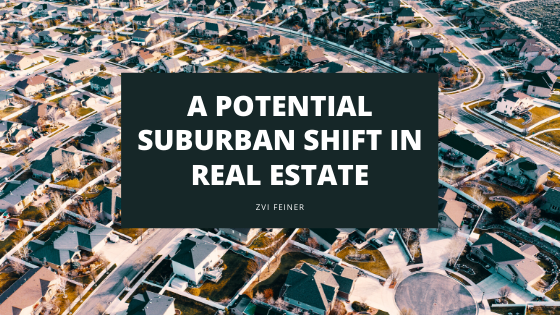Many larger corporations, as well as mid-sized companies, are choosing to extend their current working-from-home policies, in the wake of COVID-19, until at least autumn. As such, those that predict real estate trends feel that the time is right for another suburban boom. This country has not seen an actual suburban increase since the years following World War II.
Don’t see the connection? Here are some points to consider:
Workers are Finding That They Enjoy Remote Employment
It has been estimated, per a recent survey, that up to three-quarters of those in this country that are working from home, due to the novel coronavirus, would prefer to keep telecommuting, at least half of the time, once it is safe to go back to work. Two-thirds of those asked say they would consider moving farther from densely-packed cities if the option to work remotely was on the table.
Suburban housing is usually less affordable, and the cost of gas and workers’ time only adds to the unsustainability of living outside of the cities they may work in. However, by working remotely, many families will find that they can afford to live further from the predominant urban areas and can choose larger homes on vast swaths of land.
The best part about living by the major city that houses one’s employer, in a nearby suburb, is that workers will still be able to come by the office at least once weekly, if necessary, even if they are working from home.
Suburbs are Near Cities’ Amenities and Have Their Own
Living in the suburbs is far better than residing in rural areas for young professionals because they still have some proximity to the city. Not only will employees be able to make office visits, but they will also be close to amenities that only the city could provide.
Larger suburbs also have their restaurants, grocery stores, shopping centers and malls, boutiques, art galleries, museums, movie theaters, and gyms. Many middle-class homebuyers place a great deal of importance on these conveniences while desiring large homes and spacious lots. Therefore, rural areas will not be as in-demand as suburban land.
Houses are Going to Become More Affordable Soon
Because of the current economic climate, also due to COVID-19, the Gross Domestic Product (GDP) is about to plummet, with current estimates predicting an approximate 5% drop. This means that anyone selling their home will find that it has dropped in value. In other words, many lucky buyers will soon be able to find prime real estate at bargain-basement prices. This trend should continue until the summer of 2021 when housing prices are believed to return to pre-coronavirus rates.
Close Quarters are not Preferable These Days
Since social distancing is one of the premier weapons that we have, as a nation, against the spread of COVID-19, many people are finding that being clustered-up in crowded apartment buildings is a much less healthy housing choice. This is especially true since many people will be touching the same doorknobs, gates, mailboxes, and railings on common staircases.
Bigger Houses Have Room for Offices or Studios
Many homebuyers that intend to continue working remotely will need to purchase larger homes with extra rooms for offices, studios, or storage for business inventory. So, while remote workers will benefit from the current situation by being able to live farther away, and, as such, having the luxury to purchase a larger home, the house will need to be more significant to compensate for the workspace necessary for telecommuting.
Unlike the last two centuries, young people these days are no longer going to have to move to the nearest large metropolis to “make it.” This is just another example of how everything changes at a rapid pace due to the current pandemic.

